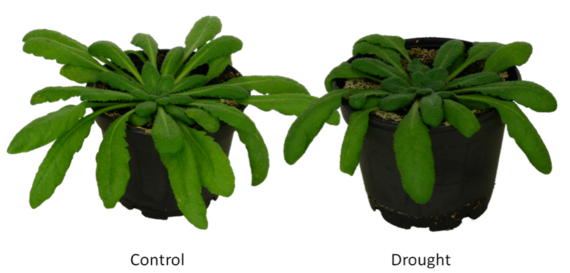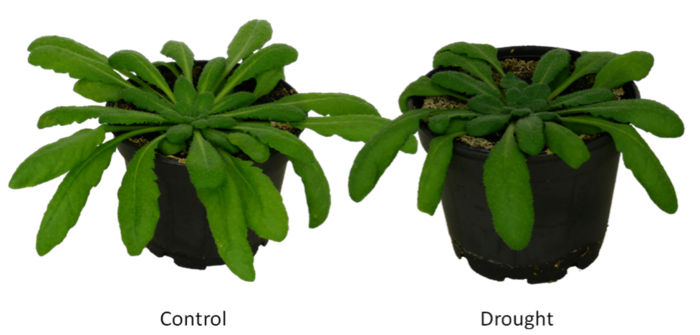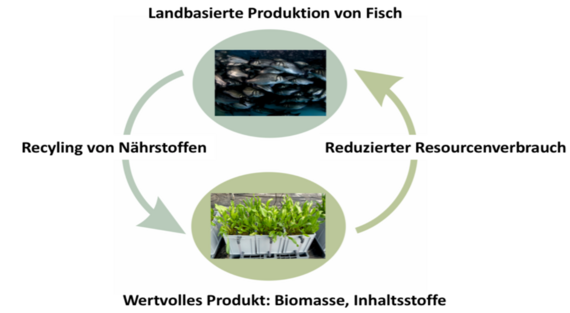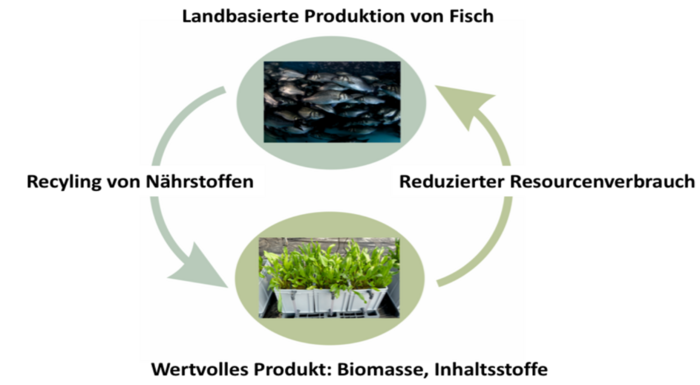Functional analysis of sulfotransferases in Arabidopsis thaliana



All members of the sulfotransferase (SOT, EC 2.8.2.-) protein family transfer the sulfur molecule in its highest oxidation state as sulfate to an appropriate hydroxyl group to several classes of substrates by using 3’-phosphoadenosine 5’-phosphosulfate as sulfuryl donor. In plants, sulfate conjugation reactions seems to play an important role in plant growth, development and adaptation to stress. The genome of Arabidopsis thaliana contains in total 21 genes that are likely to encode SOT proteins. Many of their substrates, and therefore the respective physiological roles, of plant SOT proteins are not known. In Arabidopsis three SOT proteins catalyze the last step of glucosinolate (Gl) biosynthesis. In vitro enzyme assays revealed preferences of the recombinant SOT proteins for chemically different types of Gls. The putative role of SOT proteins in the manipulation of Gl biosynthesis and regulatory aspects are currently investigated by the production and investigation of various mutants: T-DNA insertion mutants, overexpressing lines and CRISPR/Cas mutants.
More information: DOI: 10.1038/s41598-017-04539-2
Funding: DFG (expired)
Glucosinolate biosynthesis and their role in abiotic stress



Glucosinolates (Gls) are sulfur containing secondary metabolites only found in the order Capparales. Gls are well known to play an important role upon biotic stress conditions. However, their role in abiotic stress defense is not fully understood. Previous research clearly showed that the content of indolic Gls (iGl) as well as aliphatic Gls changes in response to abiotic stress, indicating a specific role. The synthesis and breakdown of Gls in stressed plants and the synthesis of various related metabolites through additional pathways could be advantageous for plants when exposed to abiotic stress, such as drought or heat. This application is designed to unveil the role of Gls and their breakdown products in abiotically stressed plants.
More information: DOI: 10.1007/s12374-019-0143-x
Funding: own financing
Development of halophytes as biofilter and valuable by-product of saline aquaculture



a) Halophytes are an interesting group of plants for different investigations and biological applications due to their special physiological characteristics and biochemical composition. Our field of interest is their potential for biofiltration, phytoremediation, degradation of xenobiotics and economic plant growing. Their ability of growing at salt affected habitats makes them useful for recycling the high nutrient containing effluents from marine aquaculture. A biological filtering cascade consisting of different halophytes (incl. mangroves) could be used to purify the water from nutrients and in parallel for phytoremediation processes of salt-contaminated areas. The potential of different halophytes for nutrient uptake and remediation is investigated in field and laboratory studies. To differentiate various ecotypes with different characteristics and demands a barcoding method for halophytes is being developed. In addition different areas of utilization of selected halophytes with filtering capacities are considered. Besides the usage as food and fodder plants their nutraceutical and biotechnological potential (oil, lipids, sugars, secondary compounds) is being investigated.
More information: DOI: 10.1007/s10499-015-9898-3, DOI: 10.1016/j.biortech.2016.08.047
Funding: DBU (expired), EU Integrated on farm Aquaponics systems for co-production of fish, halophyte vegetables, bioactive compounds, and bioenergy (AquaCombine)
b) CWetlands (homepage: cwetlandsdata.com)
The aim of this project is to take an existing database, CWetlandsData, to the next level in order to develop one-stop solutions for CW-related data and mechanisms to support research, policy development and funding, and to empower civil society organisations and practitioners to implement nature-based solutions for sustainable development.
This is to be achieved through the following activities:
1) Designing a stable, comprehensive and attractive platform to understand and apply nature-based solutions in the various stakeholder contexts;
2) Collecting high quality data through multiple channels including semi-automatic extraction of information from peer-reviewed journal articles and Citizen Science;
3) Supporting platform development with a dedicated transdisciplinary team capable of deriving critical products from CW design specifications to policy implications for the region.
Funded by: ERANet17/ICT2-0272
Genetic characterization of seagrasses and analysis of their biomolecular compounds



Seagrasses are flowering plants, belonging to one of the four families Posidoniaceace, Zosteraceae, Hydrocaritaceae and Cymodocea (Alismatales). They are the only angiosperms which grow in sea water and survive the tides unscathed. For these conditions a number of specific adaptations evolved, making these plants to a uniquely exciting area of research. The focus of our research will be on the genetic analysis by establishing a DNA barcoding system based on the sequences of rbcL and matK and AFLP analysis. In addition the content and composition of phenolic acids might shed light on this subject (chemotaxonomy).
Due to the maritime way of life, special sulfated polysaccharides evolved convergently in seagrasses and algae, protecting the organisms against an osmotic collapse. These compounds were only found in seagrasses and not in terrestrial plants. Therefore this group of substances would also be suitable to clarify evolution and phylogeny of seagrasses. Furthermore, the question arises which enzyme catalyzes this modification, as the corresponding sulfotransferase has not been identified so far.
More information: http://dx.doi.org/10.1080/14772000.2015.1046408
Funding: DAAD, Cooperation with various partners from abroad
Development of plants tolerant to abiotic stresses as crop plants



The plasticity in the tolerance of current crop plants appears to be too small to adapt adequately to fast global climate changes. As a result, arable lands available for cultivation are alarmingly decreasing on many parts of the world. Our aim is to establish new plant species with a high tolerance against abiotic stress factors, especially against drought. The plants should provide next to food and fodder qualities special useful traits, such as delivering energy, additional nutraceutical value or secondary compounds for biomedical purposes.
To reach these aims, we identify salt- and drought tolerant plants with a high capacity as crop plants. We work together with our partner land India to find temperate and subtropical plants for our research. Another aim of our work is to create a stress scale of factors and methods for a fast screening of plant species for our purposes. This scale system consists of classical methods e.g. growth rate and new methods e.g. PAM-Imaging and turgor pressure probes. We screen our species on genetic level with e.g. amplified fragment length polymorphism (AFLP) to achieve best ecotypes for our aims. Furthermore our work is to analyse secondary compounds in the test plants.
The method of PAM-Imaging is explained in more detail in the experiment of the week No. 43 :
More information: DOI: 10.1016/j.flora.2019.151460
Funding: DAAD, own funding
3D-printing of flowers and other biological objects



The teaching concept Blühende Fantasie, which was first realized as a 3D printing group at the Goetheschule in Hanover, is divided into 12-15 double hours. The teacher first introduces various 3D printing processes using worksheets and then teaches the 3D Blender program. In the further lessons, a flower component is modelled in each double hour, its modeling discussed and then built up in Blender. After the inspection and fine tuning, the final print of the first flower models follows. Afterwards, the students will dye the models with acrylic paint after presenting the real flower. The teaching concept rounds off the topic with a final model reflection and model criticism. The project is currently developing great dynamics in different directions: the teaching concept has been optimized through the multiple implementation, through the constant refinement of the models many new technical solutions have been developed, to involve more teachers training concepts for teachers in schools and for students at the LUH are being developed.
More information: DOI: 10.1002/biuz.201970505
Funding: Joachim Herz Stiftung, Stiftung NiedersachsenMetall, Qualitätsoffensive Lehrerbildung
National and international cooperations
Selection of current and completed funded projects
- EU
Integrated on farm Aquaponics systems for co-production of fish, halophyte vegetables, bioactive compounds, and bioenergy (AquaCombine)
- ERASMUS+
Guatemala-San Carlos-Deutschland-Hannover
- DAAD
Ecotoxicological analysis of halophytes growing in different levels of contamination with emerging pollutants by bio-optical and molecular tools
SulChloPros: Impact of salinity by chloride and sulphate on photosynthesis in the halophyte Prosopis strombulifera and its regulation by abscisic acid
- DFG
Einfluss der Bewässerung von Gemüse mit Abwässern auf die physiologischen Parameter, die Anfälligkeit für Bodenpathogene und die Bodeneigenschaften
- HSBDR
Analysis of the bioactive compounds of seagrasses and mangroves: composition, identification of compounds and their role in biofilm inhibition
- Stifterverband
Fellowship: Wirtschaftliches Grundverständnis in nicht-ökonomische Studiengänge integrieren - Ein Beispiel zur fallbasierten Hochschulausbildung von angehenden Biologinnen und Biologen
- Joachim Herz Stiftung, Stiftung NiedersachsenMetall
3D-Druck im schulischen Kontext
Contact


30419 Hannover







